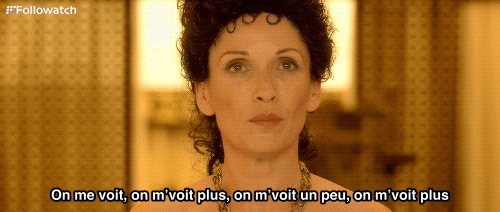Remote Work: The Complete Guide - Chapter III
Schedules, routines, discipline-or not. Build the mindset that keeps work and life separate.

Article Series
- Introduction: roadmap for the series.
- Chapter I: You were already doing remote work before.
- Chapter II: After the diagnosis comes change. Which communication channel fits which need?
- Chapter III: Hours, routine, discipline (you are here).
- Chapter IV-1: Team organization.
- Bonus: The Coffee Machine.
- Chapter IV-2: Team organization - Communication.
- More chapters depending on your reactions.
Honesty, Honesty... Remember?
Ring a bell?Don't hide it-I know you tried working in your underwear last week. That's fine. I did too. But unlike you (maybe), I stopped almost immediately. Here's why.
Nine years ago I burned out. Nothing rare these days. One reason: zero separation between work and personal life. Same story many people face, except I decided to live right across from my office. One street to cross. I could see my desk from home and my living room from work. Handy, right?
It was the worst personal experience I've had. I wouldn't wish it on anyone. Since then I've tried to live at least five minutes away from the office.
So how do you avoid that when you work from home?
That disaster taught me something: what matters is emotional separation. Build a dedicated mindset for work and another for personal life. Master that, and you can switch almost instantly.

Build Your Remote-Work Mindset: Three Methods
Method 1: Routine and Discipline
Start simple: set fixed hours, just like pre-lockdown.
Remember my sample schedule? It wasn't random. Use it as a template and adjust every few days.
The key: make a mental effort to say "I'm at work" at the exact minute your day starts, and "I'm done" the minute it ends.
Benefits
- Easy to implement.
- Prevents overwork or underwork.
- Wear whatever you want-the clock is what matters. Throw on a shirt for video calls if needed. Or not. Your call.
Drawbacks
- Possible stress: "I'm late!"
- Less freedom for personal tasks. Laundry at lunch is great-until it's time to hang it up during work hours.
- If you're a night owl, strict hours feel unnatural.
- If your team peers over your shoulder virtually, they might expect instant replies because "you're at your desk."
Method 2: Rituals (Advanced Routine)
Think of rituals as micro-switches guiding your brain from one mode to another. Combine them with idle time-the dead air we explored earlier-to boost productivity.
My rituals fall into three buckets: body, mind, transitions.
Body
- Morning exercises: stretches, a run, strength work. The activity changes, but there's always something. It tells my body we're about to work.
- Dedicated work clothes. During the shootout I even wore my racing suit to role-play being in the car. At home I stick to "office" gear during work hours and change afterward.
- Specific meals: breakfast before starting, protein at lunch, fruit or yogurt midafternoon.
Mind
- Twenty-minute meditation to focus-the same I do before a race.
- Use idle time to reset. The "Hospital" technique from Chapter II works wonders.
- Daily reviews in my notebook.
Transitions
- Set laptop and phone wallpaper to my car when I'm in "driver" mode. Silly? Maybe, but it cues my brain.
- Switch Slack status between "Available" and "Away." Simple, but effective.
- Playlists: upbeat music when I need energy, calm tracks when I edit video where audio doesn't matter. Either I'm locked in, or I'm drained-music points me toward the right tasks.
All of this together tells my brain, "We're working now." Or "We're done."
Pros
- Extremely effective once established.
- Helps avoid two classic pitfalls:
- All-you-can-work days where you never stop.
- Constantly sliding tasks to "later."
Cons
- Harder to set up. For months I had post-its everywhere. A coach helped me refine the system.
- Requires regular observation. Check that every element still serves you.
- More planning. It's worth it, but you have to commit.
In short: ideally make rituals your baseline. Just know they demand effort.
Method 3: None of the Above
Yes, having no routine is a routine. It can be refreshing-break the rules, every day, several times a day. Novelty lifts your mood.
But that's remote-work level two. Don't try it unless you feel confident.
"What about my coworkers?"
Tell them. I have a teammate whose hours I never know. When we need to collaborate, I'm not sure if he's working or not. But it doesn't matter: he allows notifications, then ignores them when off. If he picks up, it's to say "Can we talk at XXh instead?" Works fine.
Remote work opens countless options. Experiment.
Keep Work and Non-Work Separate
You can't afford to blur work and personal life forever. Not without consequences.
Overwork is one risk. When you log too many hours, productivity and effectiveness drop.
Track Your Rhythm
Use a time tracker like Toggl for a day or two.

It confirms whether you're working enough-or too much-and flags tasks that drag on at the expense of others.
Managers: properly configured, it beats a spreadsheet for spotting bottlenecks.
Separate Devices
If you use the same computer for work and Netflix, everything blurs. Keep two user accounts-or two computers if possible. Install work tools on one, personal apps on the other.
Switching accounts can become part of your ritual.
Honesty, Always
If people assume you're working, then work. If you're not, tell them and catch up later.
One coworker regularly emailed: "I need to step away for the next two to three hours. Back later." No justification. Everyone knew he was offline. As long as the job gets done, no one minds.
"If I do that, I'll get in trouble."
If that's your reality, I hear you. Unfortunately it's a trust issue. I'll tackle it in a future article. For now, talk with your manager, reassure them, share these pieces if it helps.
That's It for Today
I hope this helps. Let me know on Twitter or LinkedIn. Share your setup and role so others can learn-and because I'm curious.
I meant to dive into team organization, hallway chats, coffee breaks... and got carried away.
Unless you have burning questions, that's the next chapter.
See you soon. :)





